SOCIO-ENVIRO-ECONOMIC SYSTEM (SEES)
DESCRIBING THE ELEMENTS
|
A series of images that describe the way the 3 segments of the system have changed over time




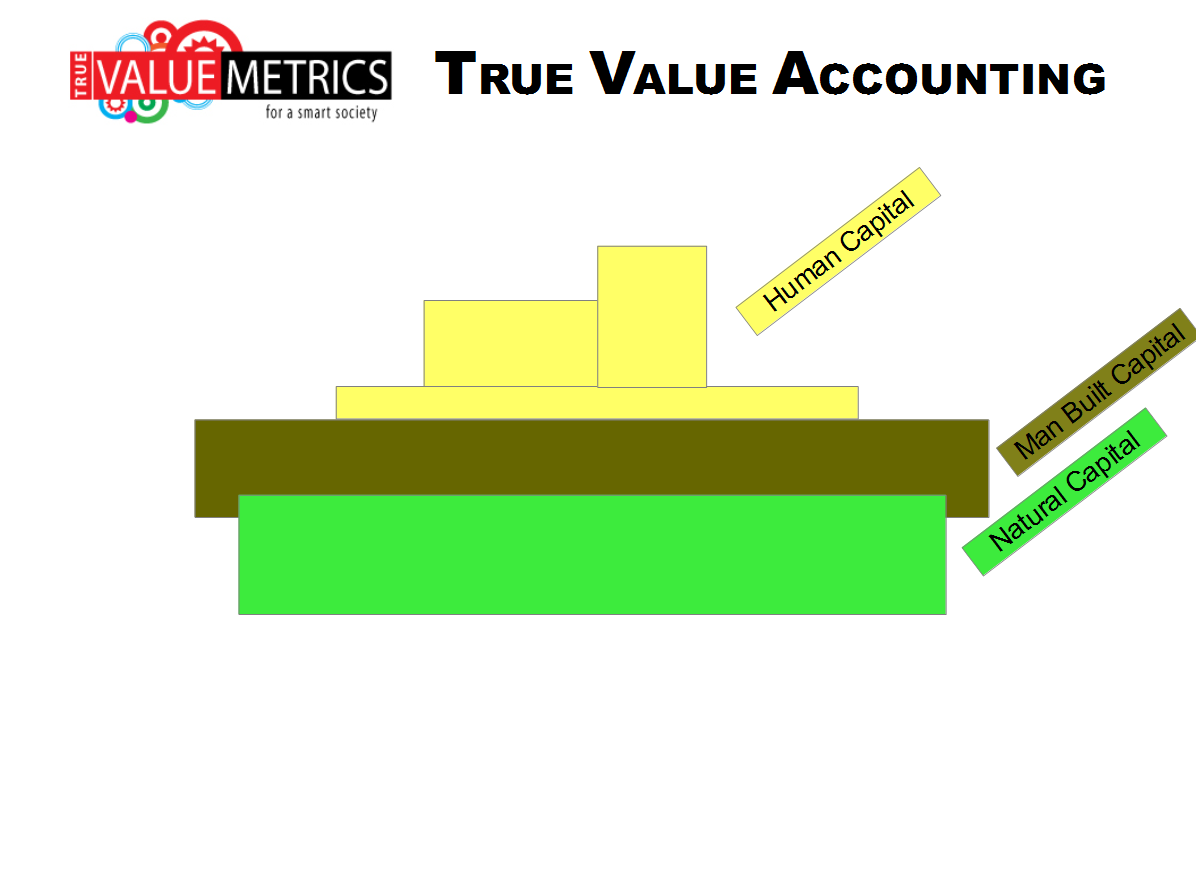

|
HOW THE SOCIO-ENVIRO-ECONOMIC SYSTEM HAS CHANGED OVER TIME
Huge amounts of Natural Capital have been converted to Financial Capital in the last 200 years!
Planetary boundaries are being exceeded, with only modest efforts to remediate Natural Capital
|

|
|
|

|
For most of human history, the population has been quite small, the quality of life pretty harsh, and life expectancy quite short.
The People Built Capital not very powerful
Nature almost completely undisturbed
|
|

|
Over time, population grew
People Built Systems became somewhat more powerful
Impact on Nature growing, but not doing much long term damage
|
|

|
Population continued to grow
People built systems became bigger and more powerful
Impact on nature not of much concern
|
|

|
Population growing and population getting much better quality of life
People built systems becoming very powerful and starting to do damage to nature
Nature starting to be impacted by people and people built systems
|
|

|
Population still growing and population getting much better quality of life
People built systems very powerful and doing serious damage to nature
Nature starting to be overwhelmed by people and people built systems
|
|

|
People losing quality of life
Person built systems now doing major irreverible damage to nature
Nature getting into a permanent state of decline
Existential crisis in play
|
|
|
|
CHANGES OVER TIME
CHANGES OVER TIME FOR THE ELEMENTS OF THE SOCIO-ENVIRO-ECONOMIC SYSTEM
|
GO TOP
|
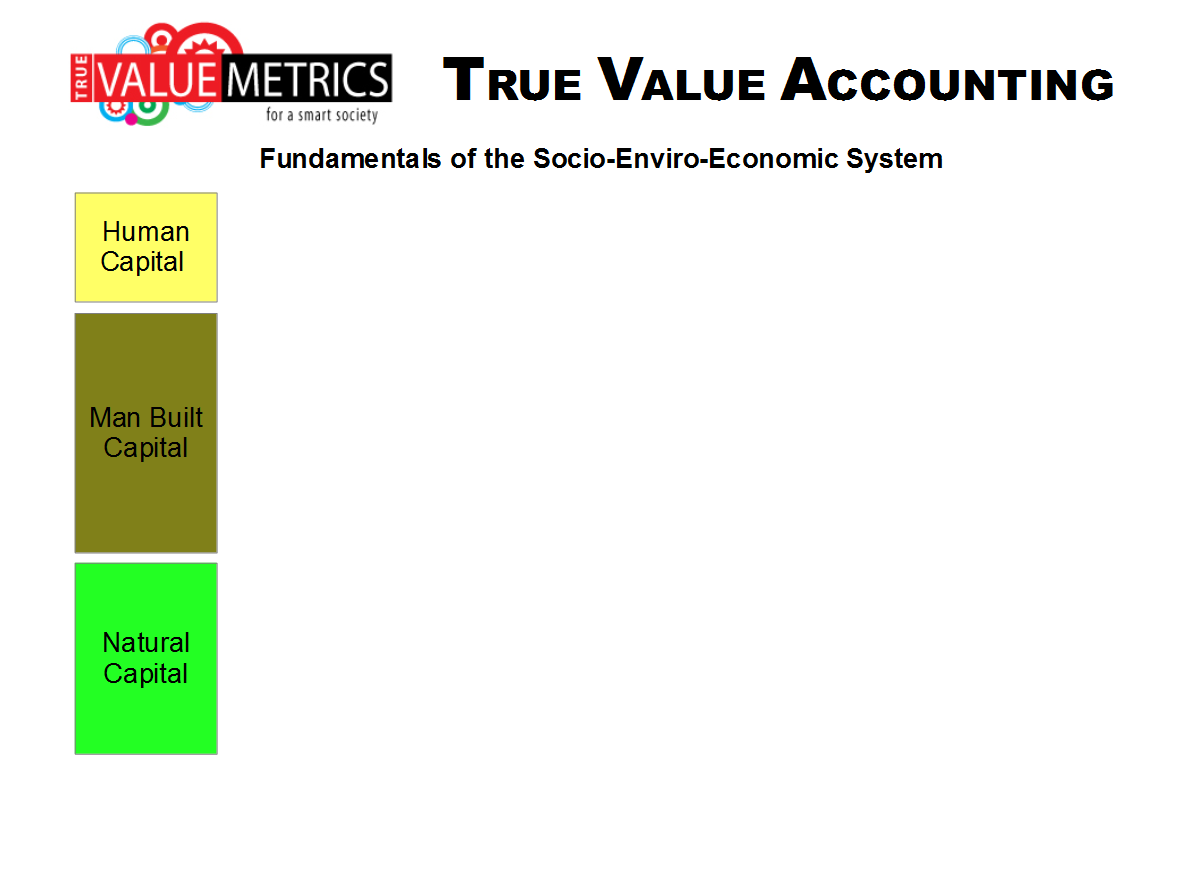
|
If we think of the Socio-Enviro-Economic system in this way: a People piece, and People Built System piece, and a Nature piece ...
|
|
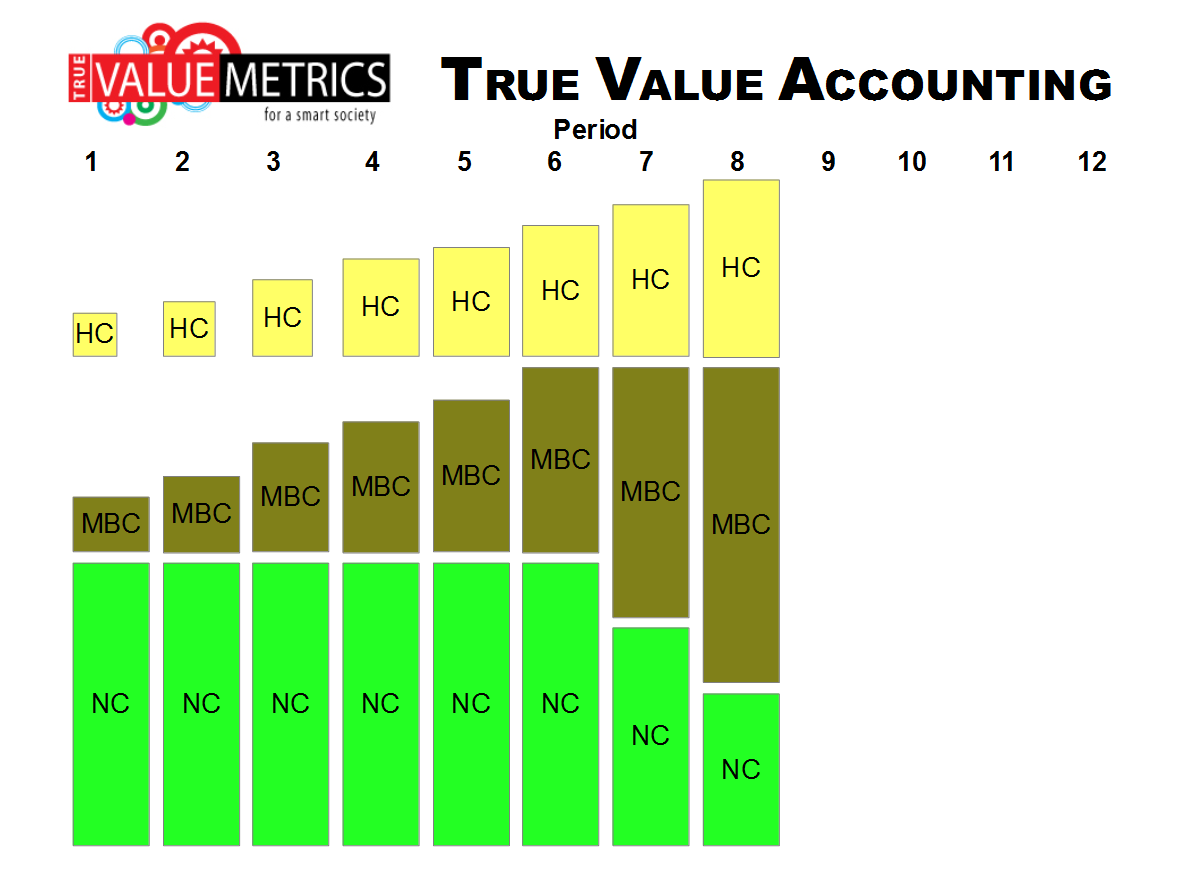
|
This is what the past has looked like ...
|
|
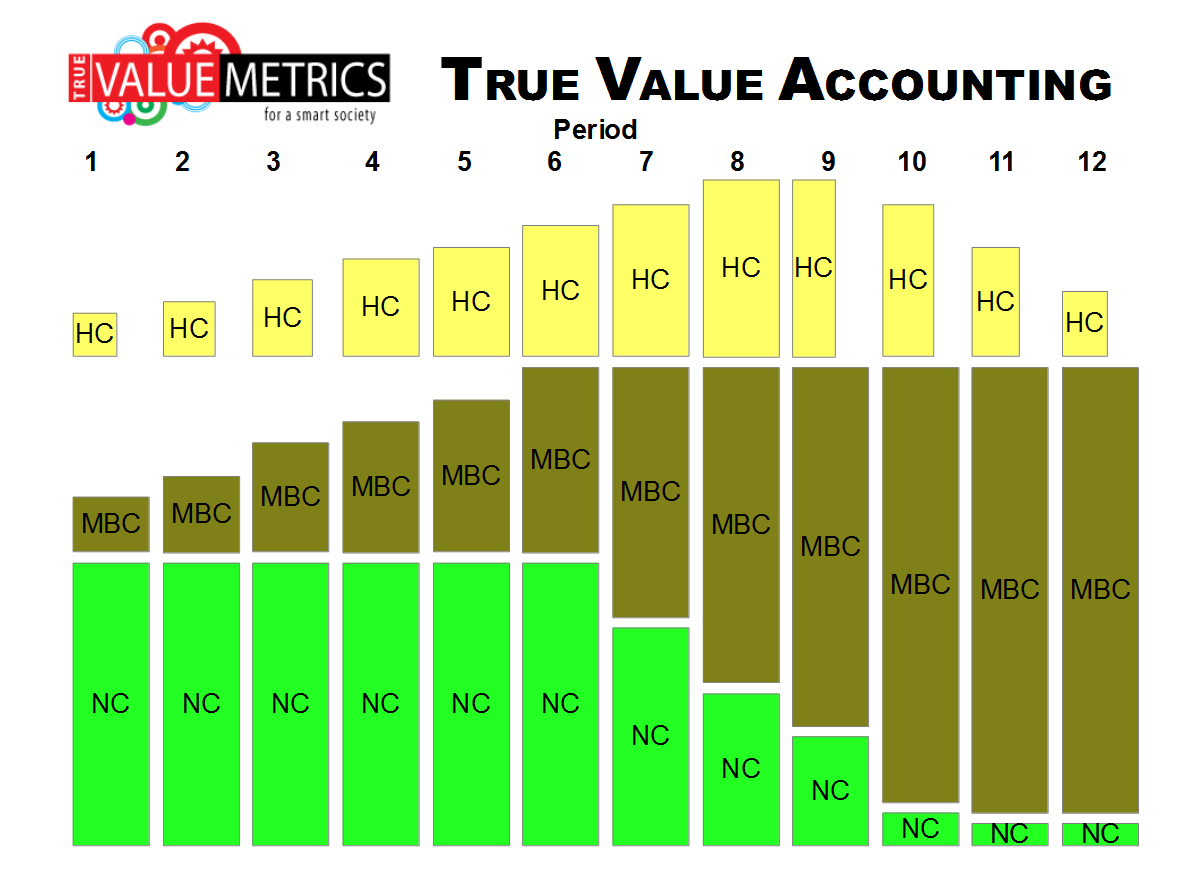
|
This is what the future will look like if we ignore the existential crisis associated with unlimited growth of people built systems ...
|
|
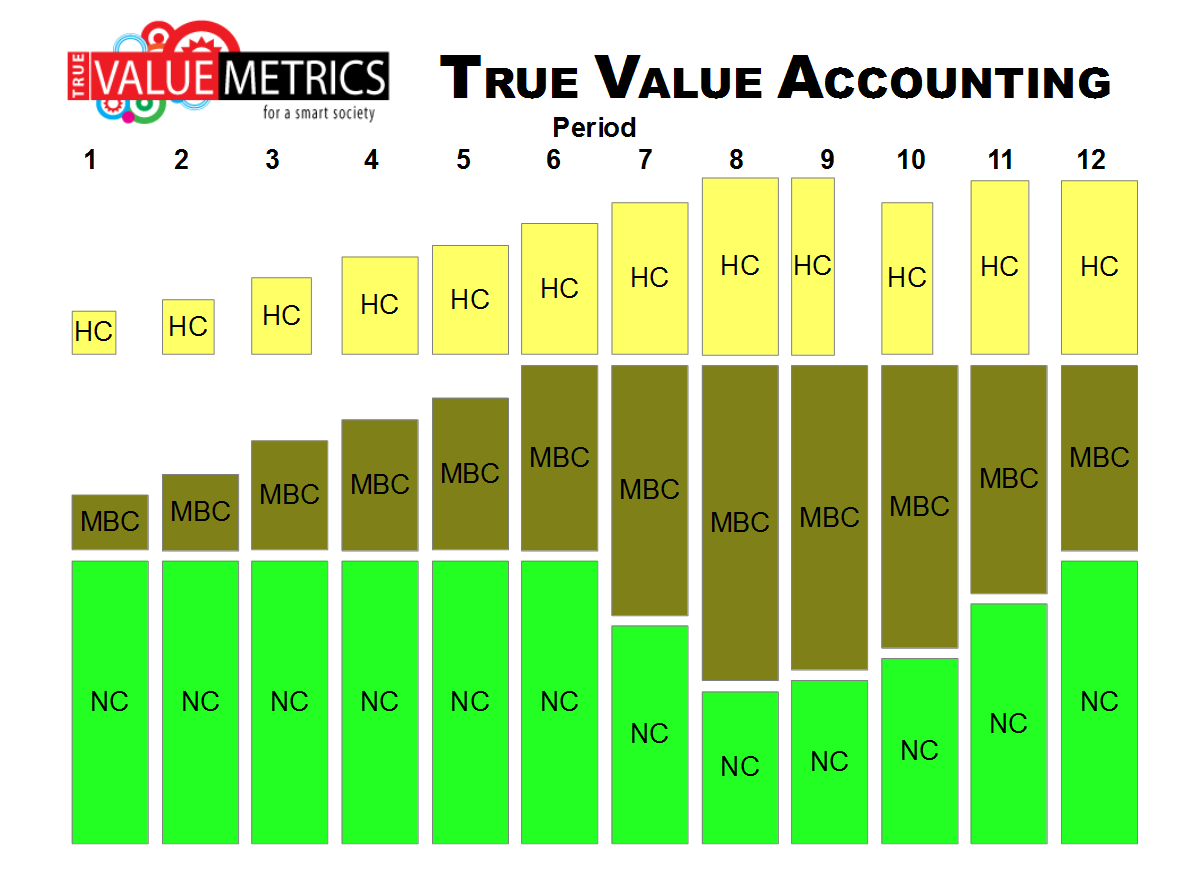
|
... and this is what we have to do in order to have a sustainable future with better quality of life and a sustaining environment
|
|
|
|
SETTING UP FOR
MEASURING PROGRESS AND PERFORMANCE
ORGANIZING THE ELEMENTS OF THE SOCIO-ENVIRO-ECONOMIC SYSTEM
|
GO TOP
|

|
If we think of the Socio-Enviro-Economic system in this way: a People piece, and People Built System piece, and a Nature piece ...
|
|

|
The first step is to separate FINANCIAL CAPITAL from the other parts of PEOPLE BUILT SYSTEMS.
|
|

|
We can improve the representation by adding the Sun which is the ultimate source of all energy for planet earth.
|
|

|
And then reorder to put FINANCIAL CAPITAL at the top to reflect the way metrics about financial capital are at the center of conventional accounting, financial reporting and economic analysis.
|
|
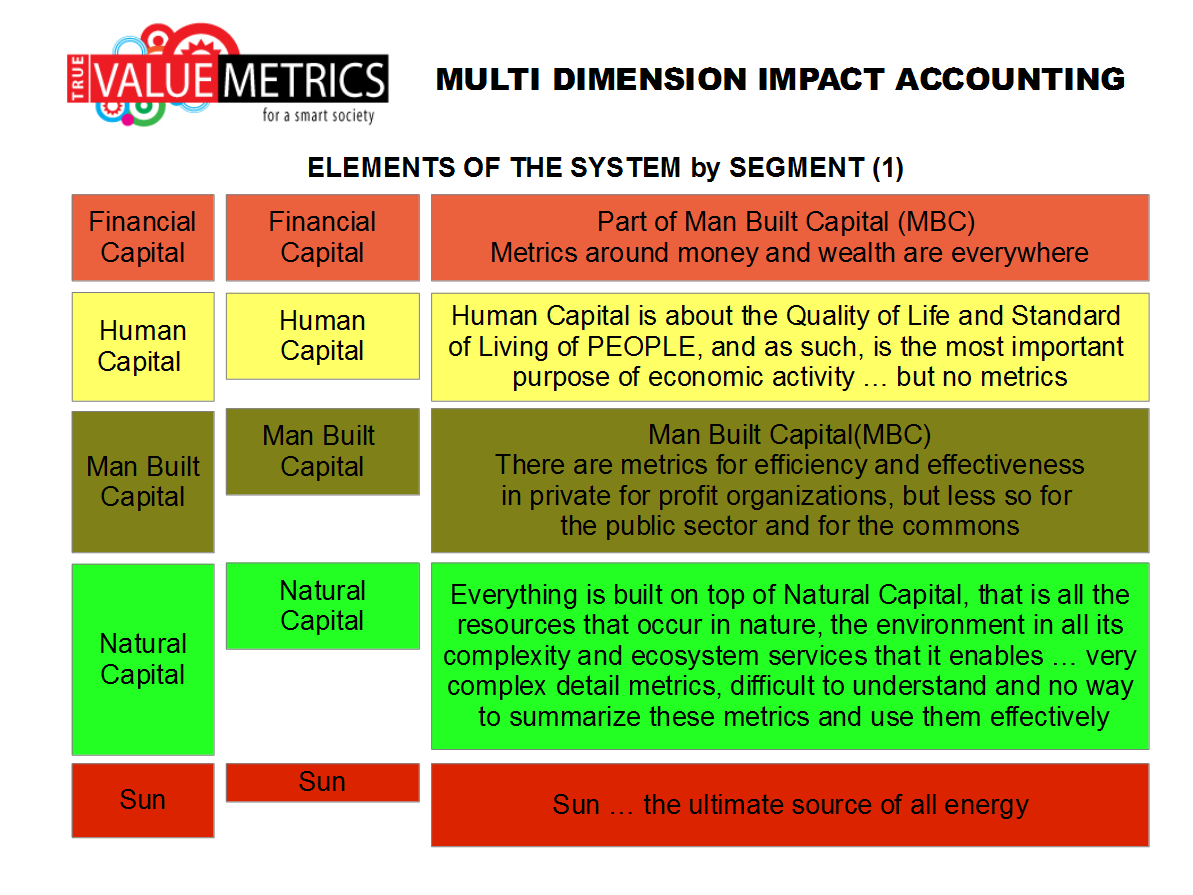
|
Elements of the System by Segment (I)
|
|




|
Elements of the System by Segment (II)
|
|

|
Segments of the PEOPLE BUILT SYSTEM
|
|

|
PEOPLE BUILT SYSTEM ...
|
|

|
PEOPLE BUILT SYSTEM ... FINANCIAL CAPITAL
Financial Capital is part of Man Built Capital but separated out for the purpose of analysis because it has become such an important part of the conventional way of measuring … specifically:
(1) business profit;
(2) capital market valuations; and,
(3) GDP growth.
|
|

|
PEOPLE BUILT SYSTEM ... INTANGIBLE CAPITAL ... Institutional Capital
|
|

|
PEOPLE BUILT SYSTEM ... INTANGIBLE CAPITAL ... Knowledge Capital
Knowledge Capital ... What we know enables productivity and performance. ... Some of this is shared universally and is available for free use, and some is owned by Individuals and Business entities and may be used for their private gain at the expense of society as a whole.
Knowledge Capital ... Knowledge Capital is expanding rapidly … faster than at any previous time in history. ... Important parts of Knowledge Capital have been created with Government funds, often for military and security purposes.
|
|
THE SEGMENTATION OF CAPITAL
There is no 'right' way to categorize or segment capital ... the critical key concept is that ALL of capital is included in the analysis and management (decision making) for the system
The TVA segments were chosen as they seem to reflect the state and flow of all the elements in the socio-enviro-econmic system.
|

|
An 8 segment breakdown
1 ... ... Individual
2 ... ... Intellectual
3 ... ... Social
4 ... ... Cultural
5 ... ... Natural Capital
6 ... ... Financial
7 ... ... Built
8 ... ... Political
|
The top TVM segments are:
People / Human Capital
Natural Capital
People Built Systems and Structures (PBSS)
... Financial Capital
... Physical Capital
... Intangible Capital
|
So this maps as follows:
People / Human Capital
... ... Individual
... ... Intellectual
... ... Social
... ... Cultural
Natural Capital
... ... Natural Capital
PBSS - Financial Capital
... ... Financial
PBSS - Physical Capital
... ... Built
PBSS - Intangible Capital
... ... Political
|
|
|

365 272
|
This is very similar to the TVA framework. There are 3 main segments as in the TVA framework with the TVA People segment broken into Huamn Capital and Social Capital and the TVA People Built Systems (PBS) segment broken into only 2 pieces, Manufactured Capital and Financial Capital. The Intangible Capital of TVA PBS is missing in this diagram. Natural Capital is not broken down into sub-segments as it is in the TVA framework.
|
|

|
There is a growing recognition that performance must embrace not only the profit dimension, but should comprise social, economic and environmental. This SAP image shows this, but it also highlights the continuing concept that the corporate organization is at the center of this universe. TVA frames the system with people and society at the center of the system.
|
|
|
|

'http://truevaluemetrics.org/DBpdfs/ImpactAccounting/KPMG-A-New-Vision-of-Value-2014.pdf'
|
Open PDF ... KPMG-A-New-Vision-of-Value-2014.pdf
|
|
|
... Urbanization
... Population Growth
... Wealth
... Food Security
... Ecosystem Decline
... Deforestation
... Climate Change / CO2
... Energy and Fuel
... Material Resource Scarcity
... Water Scarcity
|
|
|
|
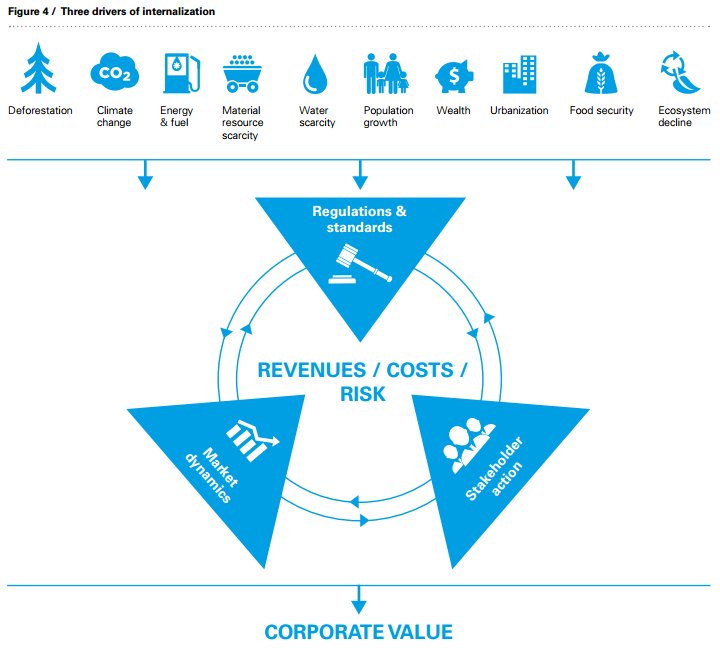
Figure 4 from this report:
'http://truevaluemetrics.org/DBpdfs/ImpactAccounting/KPMG-A-New-Vision-of-Value-2014.pdf'
|
Open PDF ... KPMG-A-New-Vision-of-Value-2014.pdf
|
|

